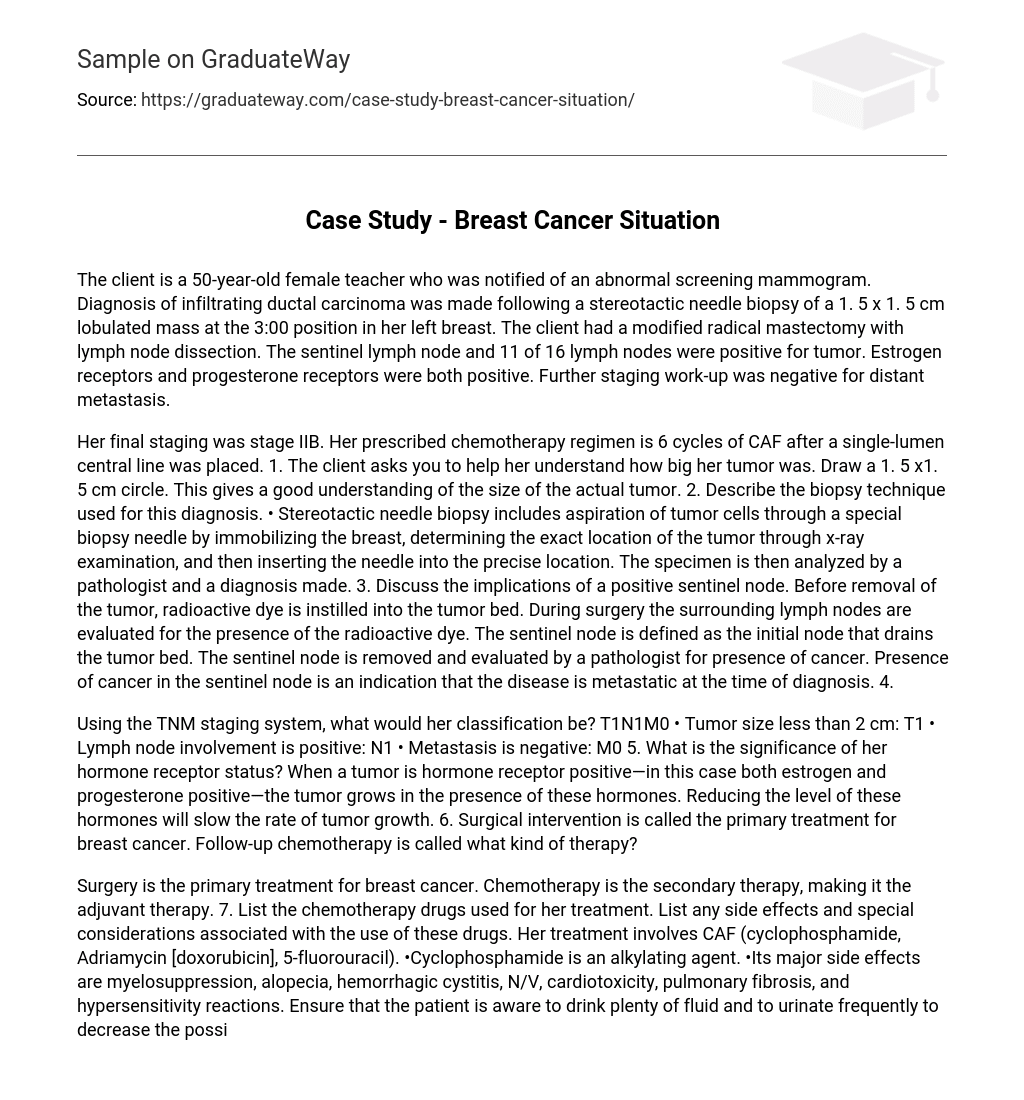The client is a 50-year-old female teacher who was notified of an abnormal screening mammogram. Diagnosis of infiltrating ductal carcinoma was made following a stereotactic needle biopsy of a 1. 5 x 1. 5 cm lobulated mass at the 3:00 position in her left breast. The client had a modified radical mastectomy with lymph node dissection.
The sentinel lymph node and 11 of 16 lymph nodes were positive for tumor. Estrogen receptors and progesterone receptors were both positive. Further staging work-up was negative for distant metastasis. Her final staging was stage IIB. Her prescribed chemotherapy regimen is 6 cycles of CAF after a single-lumen central line was placed.
The client asks you to help her understand how big her tumor was. Draw a 1. 5 x1. 5 cm circle. This gives a good understanding of the size of the actual tumor.
Describe the biopsy technique used for this diagnosis. Stereotactic needle biopsy includes aspiration of tumor cells through a special biopsy needle by immobilizing the breast, determining the exact location of the tumor through x-ray examination, and then inserting the needle into the precise location. The specimen is then analyzed by a pathologist and a diagnosis made.
Discuss the implications of a positive sentinel node. Before removal of the tumor, radioactive dye is instilled into the tumor bed. During surgery the surrounding lymph nodes are evaluated for the presence of the radioactive dye. The sentinel node is defined as the initial node that drains the tumor bed. The sentinel node is removed and evaluated by a pathologist for presence of cancer. Presence of cancer in the sentinel node is an indication that the disease is metastatic at the time of diagnosis.
Surgical intervention is called the primary treatment for breast cancer. Follow-up chemotherapy is called what kind of therapy? Surgery is the primary treatment for breast cancer. Chemotherapy is the secondary therapy, making it the adjuvant therapy.





